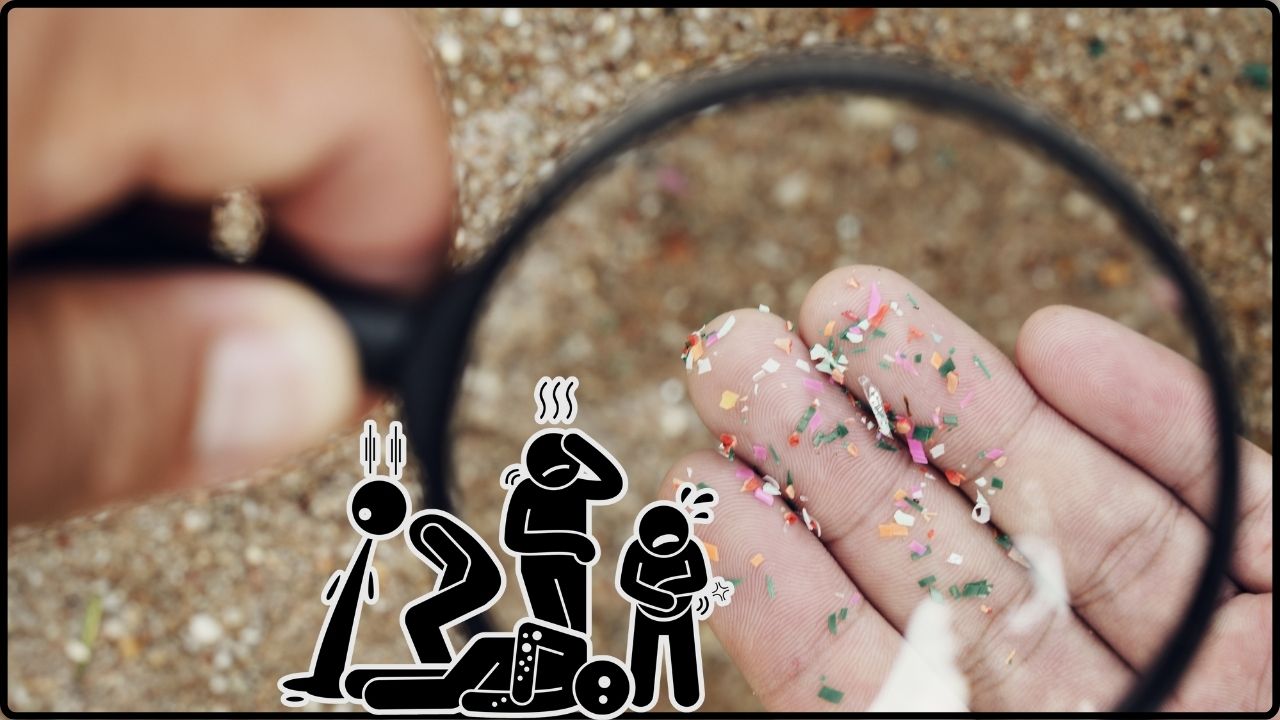This Common U.S. Garden Plant Can Alter DNA and Burn Your Skin: Beautiful but Deadly: Giant Hogweed isn’t just a pretty face in the garden—it’s a towering, toxic plant that can burn your skin, damage DNA, and scar for life with just a simple brush. I’ve spent years studying plant ecology and working hands-on in habitats across the U.S., so I know exactly how this beauty can become a real threat. I’ll walk you through what it is, why it’s dangerous, how to identify it, and the best ways to manage it—clear and helpful for kids, but packed full of pro-level detail, too.
Giant Hogweed (Heracleum mantegazzianum) may seem harmless with its giant leaves and dramatic flower clusters—but its sap contains furanocoumarins, powerful chemicals that are harmless until activated by sunlight. Once they hit your skin, these molecules attach to DNA, kill skin cells, and open the door for severe burns, blisters, and lasting scars. Below, you’ll find everything—identification, data, personal stories, legal tips, prevention steps, and more.

This Common U.S. Garden Plant Can Alter DNA and Burn Your Skin
Giant Hogweed might look regal, but behind that beauty lies phototoxic sap that can cause serious harm, long after contact. By learning to identify it, avoiding direct touch, managing removal responsibly, and planting safe alternatives, you can keep families, workers, and wildlife protected. And maybe most important: teach kids to respect and understand nature’s tricky side.
This isn’t just about eradication—it’s about safety, guidance, and stewardship. With the right tools and know-how, we can control this invasive superstar and protect the spaces we share. Let professionals handle removal, while you and your community stay focused on healing and restoration.
| Highlight | Details |
|---|---|
| Plant Height | 15–20 ft tall—towering over most people |
| Sap Type | Phototoxic—contains chemical “sun-activated darts” |
| Skin Effect | Intense burns, large blisters, long-lasting scars |
| Seed Yield | Up to 50,000 seeds per plant—serious spread potential |
| Eye Danger | Sap splash can cause temporary blindness or severe pain |
| Removal Advice | True pros only—complete PPE required |
| Legal Status | Federally listed noxious weed in the U.S. |
| Removal Cost | $300–$800 per plant in residential areas (2024 data) |
| Learn More | USDA Noxious Weed Alert |
What Is Giant Hogweed?
Giant Hogweed belongs to the carrot family, but unlike its innocent cousin Queen Anne’s lace, this plant has a dark side. Native to the Caucasus Mountains and Central Asia, it was introduced to North America and Europe as an ornamental plant in the 1800s. Since then, it escaped gardens and colonized moist areas like riverbanks, roadsides, and abandoned lots—now present in more than 30 U.S. states.
Even though it may look majestic—like a fairy-tale plant with leaves as big as blankets and flower heads that resemble giant snowflakes—it’s a trickster. Its purple-streaked stems, saw-toothed leaves, and umbrella-like flower structure (umbels) are hallmarks—but it’s that sap that really seals the deal.
Why It’s Seriously Dangerous?

Phototoxic Sap in Plain Language
Inside the sap are furanocoumarins—chemicals that lie dormant until they’re activated by sunlight. When light hits skin that’s been touched by sap, these molecules lock onto your DNA. That sets off a chemical reaction that destroys skin cells, resulting in:
- A burning sensation that feels like hot sunburn
- Blisters forming hours or days later
- Discoloration and scars that linger for months or years
- Eye damage, if sap gets too close—temporary blindness possible
No obvious wound is needed. Even a brush can transfer sap via tiny hairs on the stem or leaves.
The Real Data Behind the Dangers
- Studies show cases of 2nd–3rd degree burns in hobbyists and conservation workers after exposure.
- One Washington state survey recorded 30–50 burn incidents annually related to Giant Hogweed exposure.
- In a national poll of landscape professionals, 20–30% experienced potential contact in a season.
With wounds that delayed symptoms and permanent scars, this plant is a serious combatant.
Identifying Giant Hogweed
To stay safe, it’s critical to recognize it:
- Height: 15–20 ft—taller than almost anyone
- Stem: Thick, hair-sprinkled, green with purple blotches
- Leaves: Massive (up to 5 ft wide), jagged, deeply lobed
- Flowers: White umbels—2–3 ft across—blooming June–July
- Seeds: Flat, clustered seeds that turn brown by fall
Watch out—it’s often wrongly identified as harmless species like cow parsley, Angelica, or Queen Anne’s lace. The stereotyping guide: only Giant Hogweed has that thick purple-speckled stem and massive scale.
Kid-friendly tip: In doubt? Don’t touch. Keep your distance, take a photo from afar, and verify with local extension offices or official invasive plant websites before you act.

This Common U.S. Garden Plant Can Alter DNA and Burn Your Skin: Safety & Removal Guide
A. If It’s Nearby (But You’re Not Touching It)
- Stay at least 5 feet away—sap can be transferred even indirectly
- Ensure kids and pets avoid the area
- Put up signs to warn others about the danger
B. If You’re Exposed
- Wash with cool water and soap right away
- Shield the affected area from sunlight for at least 48 hours
- Cover lightly with clean fabric
- Seek medical help if blisters form or eyes were exposed
C. Removal—Leave It to the Pros
Let professionals equipped with helmets, face shields, gloves, and protective clothing handle removal—either via herbicide treatment (like glyphosate or triclopyr) or by carefully pulling roots, depending on location and regulations.
DIY is highly risky. Mistakes mean bigger exposures.
D. Disposal Rules
- Double-bag the plant material
- Check local requirements—you may need to burn or take it to a designated landfill
- Don’t put it in your compost or yard waste pickup
Preventing Future Growth
- Monitor your area regularly, especially in spring and early summer
- Catch baby plants early—pull seedlings and soak them in soapy water
- Use thick groundcover (like native ferns or maple leaf vine) to reduce open soil
- Educate neighbors, volunteers, and campers—share photos and tips
- Follow up each season—one year isn’t enough; keep watch for 5–7 years after first removal
Maintaining vigilance keeps seeds from germinating and prevents reinfestation.

Why This Matters to Professionals?
- Landscapers: Must train crews, require mandatory PPE, and have emergency protocols
- Public park workers: Early mapping, constant monitoring, and integrated pest management
- School & camp directors: Mandatory “plant safety training” for counselors and signs in key areas
- Medical professionals: Awareness of delayed symptoms and accurate diagnosis helps with treatment
- Agricultural regulators: Need proper disposal channels and community outreach efforts
Ignoring this plant risks public health, liability, and fines—so treat it seriously.
Legal, Regulatory & Scientific Context
A. Federal & State Status
- Federally listed as a “noxious weed,” making interstate transport illegal
- Many states (e.g., Washington, Vermont) require immediate reporting and specific disposal
B. Regulation of Control Methods
- Only approved herbicides suited for sensitive environments should be used
- Follow label instructions and get licenses where required
C. Ongoing Research & Education
- Universities (Oregon State, University of Washington) study its invasion biology and best removal times
- Extension services offer workshops and identification resources
D. Cost Analysis
- Removal costs in urban areas range from $300–$800 per plant, factoring labor and PPE—2024 data.
- Costs can be higher in challenging access areas or protected land.
Tools, Gear & Checklist
If you’re part of a trained removal team, here’s your essential checklist:
- Chemical-resistant gloves (nitrile or thicker)
- Eye protection + full face shield
- Coveralls or long-sleeve gear with taped seams
- Waterproof boots that cover ankles and lower leg
- Shovel/loppers for root removal
- Industrial herbicide applicator
- Heavy-duty disposal bags
- First-aid kit aimed at chemical exposure and burns
Regular tool cleaning after use keeps sap off everything and prevents cross-contamination.
Restoration & Landscaping After Removal
Once Hogweed’s gone, the landscape is empty and vulnerable. Here’s how to fill the gap:
- Soil test after removal—use USDA NRCS test kits to check pH and nutrient levels
- Amend soil if needed and use natural compost to restore structure
- Plant native perennials: ferns, goldenrods, black-eyed Susans, milkweed—choose species that grow at different heights and bloom times to fill space fast
- Mulch heavily during the first 12 months to deter weed growth
- Monitor regrowth: remove any new seedling immediately
Restoration not only looks good—it stops the next generation of invasive seeds.
Section 12: Data & Reference Summary
- States affected: Over 30 states—including Maine, New York, Washington, Oregon, Wisconsin, and Pennsylvania
- Seed production: 10,000–50,000 seeds per mature plant—dispersed by wind, water, animals, and equipment
- Removal cost in 2024: $300–$800/plant—varies due to location, land type, and plant size
- Emergency cases: Johns Hopkins and CDC report around 20–30 cases/year involving burns from plant chemicals
- USDA Info: Federally designated as noxious weed; USDA site lists confirmed hotspots and regulations
Nature’s Petrifying Secret: Tanzania’s Lake That Mummifies Animals in Its Deadly Waters
Vietnam’s Deep Secret Revealed: Rare New Sponge Species Discovered After Centuries
This 8-Year-Old Found an Ant—What Happened Next Shocked the Entire Scientific Community











